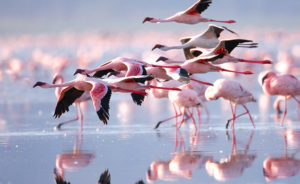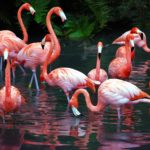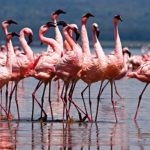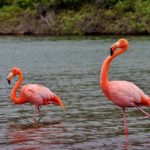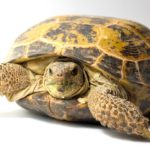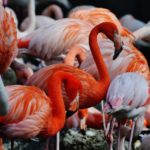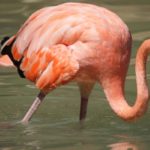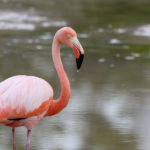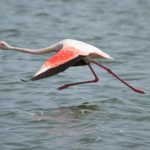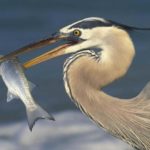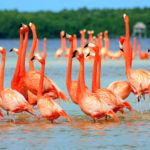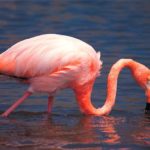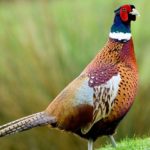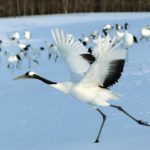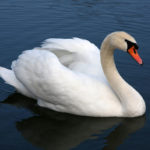Facts about flamingos
 Flamingos are found in warm, shallow, watery regions on many continents. Their extensive habitats include river estuaries and saline or alkaline lakes in Africa, Asia, North America, Central America, South America and Europe.
Flamingos are found in warm, shallow, watery regions on many continents. Their extensive habitats include river estuaries and saline or alkaline lakes in Africa, Asia, North America, Central America, South America and Europe.- Well-adapted birds live in hot volcanic lakes, as well as in ice lakes in the Andes mountains.
- Their beautiful color comes from algae, diatoms and small crustaceans, which they eat, and which are rich in carotene.
- They have an interesting dietary method: they muddy mud and water with their long legs and webbed feet. Then immerse your beak, or even your head in water and absorb dirt and water. They shake their heads from side to side to shake off excess dirt and water, hold and eat plankton, fish and tiny fly larvae. When feeding, the flamingos hold their breath.
- Flamingos, as a rule, smarten up, which takes a considerable amount of time every day. They smarten up using their beaks, which distribute fat from the iron at the base of the tail to their feathers.
- Unlike their appearance, they are surprisingly good swimmers. Their webbed feet help them to swim and stand in soft mud. However, they do not swim if the water is too deep to waddle
- Flamingos live in groups that are called flocks or colonies. Large numbers provide safety from predators, especially when they eat upside down underwater. In addition, they do not nest if there are other flamingos around.
- Flamingos bear equal responsibility in the upbringing of children. Both the male and the female accumulate mud to build a nest in which the female lays one egg each. About 30 days after the incubation period, when the parents are incubated in turn, a chick with gray or white plumage hatching from the egg.
- Both parents process the food that is given to the baby, and the mother and father give off milk-like substances, which ensures their nestlings are properly nourished. This lasts until the beak of the chick is fully formed and it can extract food.
- Flock of flamingos is a truly magnificent spectacle. They gain speed to fly up and flap their wings almost continuously during the flight. The flock can reach 31 to 37 mph.
- Recently, changes in the nature of migration of flamingos have resulted from environmental changes and global warming. These birds easily travel over long distances and can travel more than 300 miles in one night.
